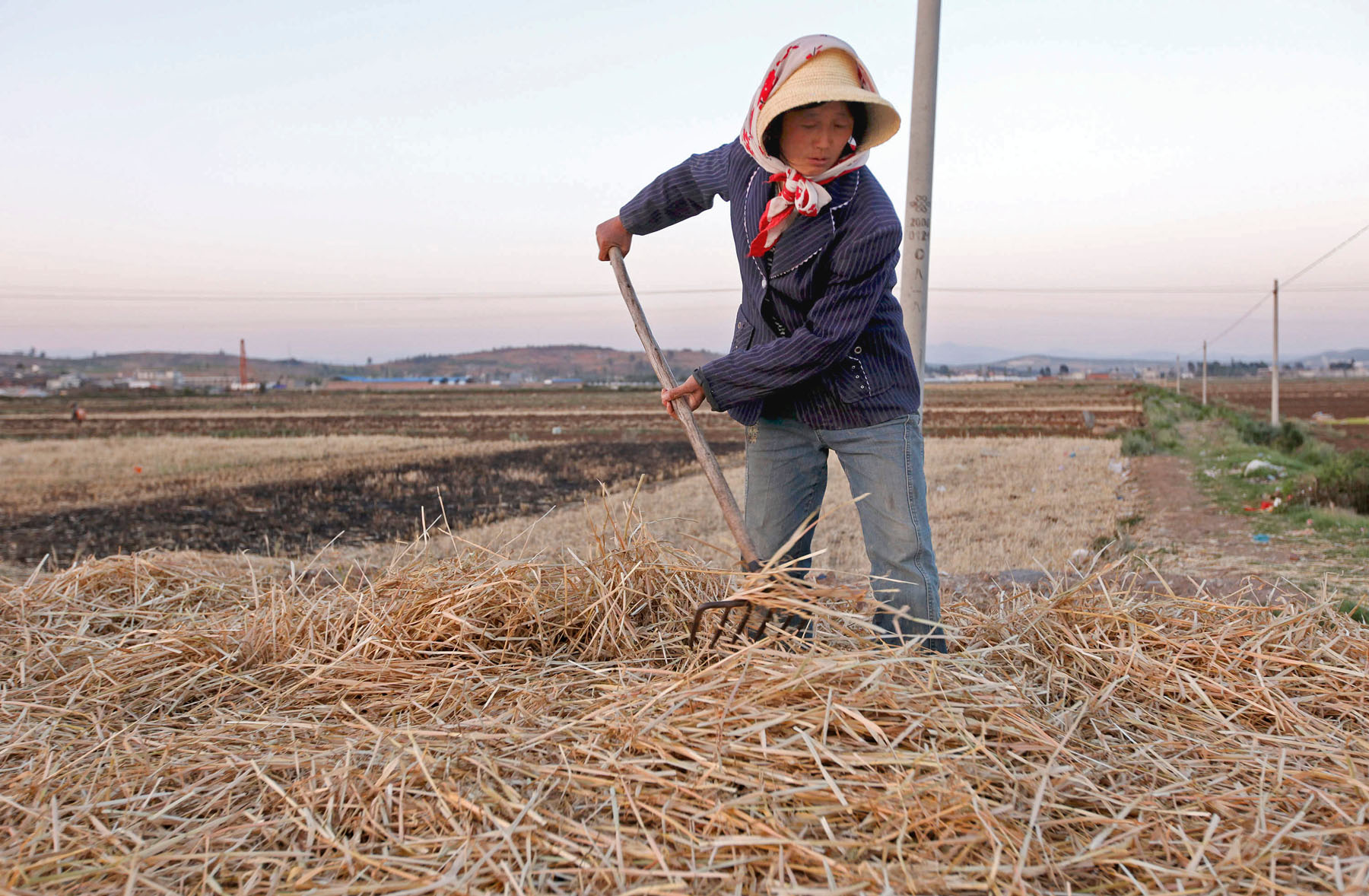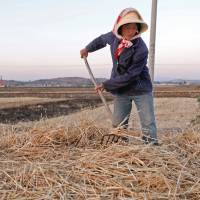Wells are drying up and underwater tables falling so fast in the Middle East and parts of India, China and the United States that food supplies are seriously threatened, one of the world's leading resource analysts warned on July 7.
In a major new essay, Lester Brown, head of the Earth Policy Institute in Washington, claims that 18 countries, together containing half the world's people, are now overpumping their underground water tables to the point — known as "peak water" — where they are not replenishing and where harvests are getting smaller each year.
The situation is most serious in the Middle East. According to Brown: "Among the countries whose water supply has peaked and begun to decline are Saudi Arabia, Syria, Iraq and Yemen. By 2016 Saudi Arabia projects it will be importing some 15 million tons of wheat, rice, corn and barley to feed its population of 30 million people. It is the first country to publicly project how aquifer depletion will shrink its grain harvest.
"The world is seeing the collision between population growth and water supply at the regional level. For the first time in history, grain production is dropping in a geographic region with nothing in sight to arrest the decline. Because of the failure of governments in the region to mesh population and water policies, each day now brings 10,000 more people to feed and less irrigation water with which to feed them."
Brown warns that Syria's grain production peaked in 2002 and since then has dropped 30 percent; Iraq has dropped its grain production 33 percent since 2004; and production in Iran dropped 10 percent between 2007 and 2012 as its irrigation wells started to go dry.
"Iran is already in deep trouble. It is feeling the effects of shrinking water supplies from overpumping. Yemen is fast becoming a hydrological basket case. Grain production has fallen there by half over the last 35 years. By 2015 irrigated fields will be a rarity and the country will be importing virtually all of its grain."
There is also concern about falling water tables in China, India and the U.S., the world's three largest food-producing countries. "In India, 175 million people are being fed with grain produced by overpumping, in China 130 million. In the United States the irrigated area is shrinking in leading farm states with rapid population growth, such as California and Texas, as aquifers are depleted and irrigation water is diverted to cities."
Falling water tables are already adversely affecting harvest prospects in China, which rivals the U.S. as the world's largest grain producer, says Brown. "The water table under the North China Plain, an area that produces more than half of the country's wheat and a third of its maize is falling fast. Overpumping has largely depleted the shallow aquifer, forcing well drillers to turn to the region's deep aquifer, which is not replenishable."
The situation in India may be even worse, given that well drillers are now using modified oil-drilling technology to reach water half a mile or more deep.
"The harvest has been expanding rapidly in recent years, but only because of massive overpumping from the water table. The margin between food consumption and survival is precarious in India, whose population is growing by 18 million per year and where irrigation depends almost entirely on underground water. Farmers have drilled some 21 million irrigation wells and are pumping vast amounts of underground water and water tables are declining at an accelerating rate in Punjab, Haryana, Rajasthan, Gujarat and Tamil Nadu."
In the U.S., farmers are overpumping in the Western Great Plains, including in several leading grain-producing states such as Texas, Oklahoma, Kansas and Nebraska. Irrigated agriculture has thrived in these states, but the water is drawn from the Ogallala aquifer, a huge underground water body that stretches from Nebraska southwards to the Texas Panhandle. "It is, unfortunately, a fossil aquifer, one that does not recharge. Once it is depleted, the wells go dry and farmers either go back to dryland farming or abandon farming altogether, depending on local conditions," says Brown.
"In Texas, located on the shallow end of the aquifer, the irrigated area peaked in 1975 and has dropped 37 percent since then. In Oklahoma irrigation peaked in 1982 and has dropped by 25 percent. In Kansas the peak did not come until 2009, but during the three years since then it has dropped precipitously, falling nearly 30 percent. Nebraska saw its irrigated area peak in 2007. Since then its grain harvest has shrunk by 15 percent."
Brown warned that many other countries may be on the verge of declining harvests. "With less water for irrigation, Mexico may be on the verge of a downturn in its grain harvest. Pakistan may also have reached peak water. If so, peak grain may not be far behind."


















With your current subscription plan you can comment on stories. However, before writing your first comment, please create a display name in the Profile section of your subscriber account page.